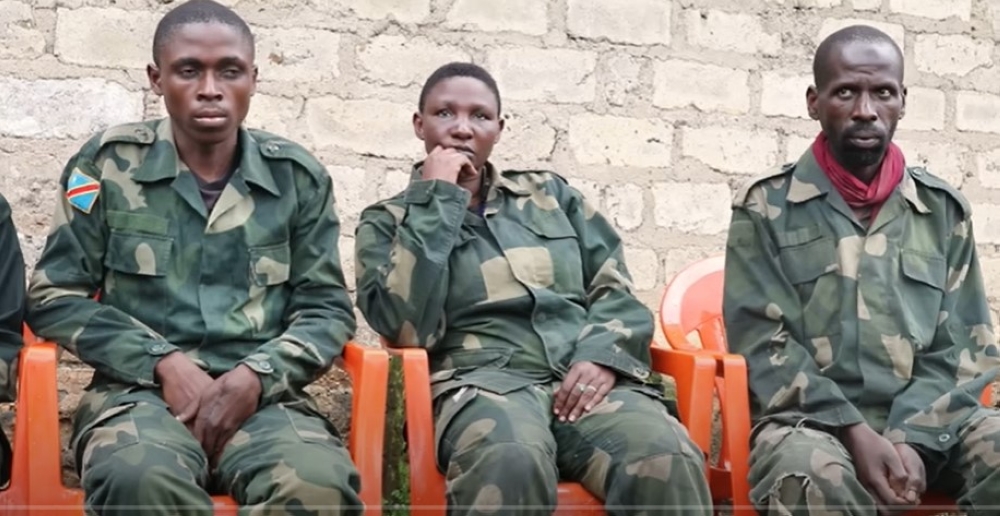

The genocidal armed group, FDLR that operates out of the Democratic Republic of Congo has been helped by the host government to regroup, in their quest to advance their extremist agenda, including attacking Rwanda.
According to a latest report by the UN Group of Experts a copy of which The New Times has obtained, the leadership of Kinshasa has offered significant support – financially and logistically – for the group, which was sanctioned by the UN, to regain its footing.
ALSO READ DR Congo crisis: Understanding FDLR’s source of funding
Kinshasa, through the national army the FARDC, has been using the FDLR-FOCA in their fight against M23, a Congolese rebel group established to protect their community against extermination by elements including the genocidal militia.
The draft UN report names ‘Major General’ Pacifique Ntawunguka as the overall FDLR military commander. Ntawunguka, who is a subject of UN sanctions, has several aliases including Omega and Israel.
Born in 1964 in the former Gisenyi region now in Rubavu District, Ntawunguka is mostly known for his extremist anti-Tutsi views. Despite his militia activities, his family leaves peacefully in Rwanda.
ALSO READ Mudacumura killed in DR Congo army operation
Another top commander in the militia group named in the UN Group of Experts report is "General” Victor Byiringiro, also known as Rumuri or Rumuli, who is the interim president of FDLR-FOCA’s political wing. Byiringiro also goes by the names of Augustin Iyamuremye.
Meanwhile, "major-general” Cyprien Uzabakiriko (alias Ave Maria or Mugisha Kolomboka) was mentioned in the report as Byiringiro’s deputy and also oversees FDLR-FOCA’s intelligence function.


Placide Niyiturinda (alias Cure Ngoma) was FDLR-FOCA’s spokesperson of the terror group, while "colonel” Sirkoof (alias Gustave Kubwayo) was appointed as new CRAP commander, replacing Col’ Protogene Ruvugayimikore at the helm of the commando unit after the latter was killed in an apparent power struggle within FDLR last December.
He was killed by Ntawunguka according to the UN report.
Sirkoof is deputized by Guillaume Ngabo, who also uses the alias Bagdad.
The group was founded and is composed of elements responsible for the 1994 Genocide who have for 30 years lived in eastern DR Congo where they presided over indescribable suffering to Congolese citizens.
They have also over the years made incursions into Rwanda, killing people, wounding others and looting property.
Despite setbacks suffered by FDLR over the past years including the death of its overall leader ‘Gen’ Sylvestre Mudacumura in 2019, and a number of other commanders in subsequent attacks, FDLR has been given enough support to regroup and rearm to sustain their attacks against Congolese Tutsi.
Other notable deaths include that of ‘General' Gabral Secyugu Nsengiyumva was killed in October 2020, just days after he was appointed to head G3, which put him in charge of the militia groups overall operations, and Ruvugayimikore who assumed several aliases including Gaby Ruhinda, Ruhinda, and Zorro Midende.
ALSO READ Who is Ruvugayimikore, the FDLR commander killed by M23?
In the ongoing fighting with M23, according to the UN report, FDLR are either fighting alone or alongside FARDC, other militia group or the Burundian National Defence Forces (FDNB) in eastern DR Congo.
"They are operating around areas including Karengera, Rusayo, Mudodja,
Kanyagira, Kibati and Kanyamahoro, which are all traditional FDLR-FOCA strongholds,” according to the report.
The UN report indicates that earlier this year, the Congolese government deployed into rank and file of FDLR, over 500 fighters, who had completed military training at a government facility, an indication of how the genocidal force is deeply embedded in the Congolese armed forces.
Crucially, the UN report indicates that the FDLR hierarchy appointed Fidele Sebagenzi, one of its key commanders as a liason officer between the "Gen' Ntawunguka, FDLR overall commander and the North Kivu Governor, Major General Cirimwami.
However, despite this evidence adduced by the Group of Experts, their report does not make any serious recommendations on how this dangerous group can be disarmed, demobilised and repatriated as recommended by the Luanda Roadmap agreed upon by regional leaders and which the international community claims to support.


